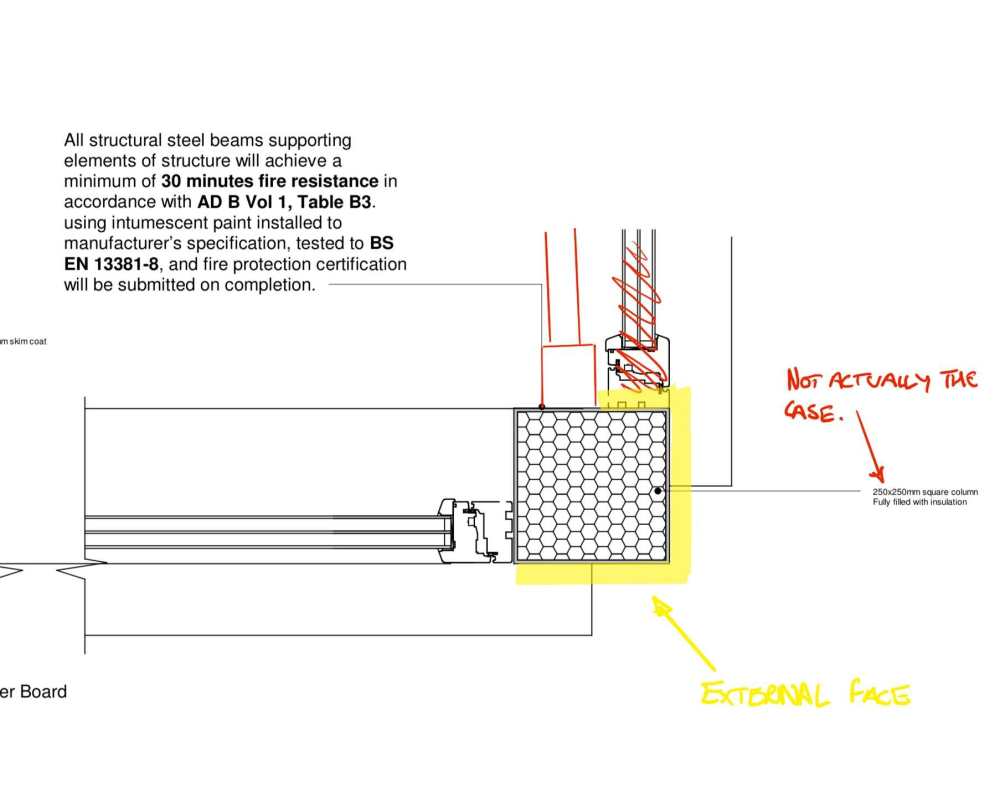
Great_scot_selfbuild
Members-
Posts
194 -
Joined
-
Last visited
Personal Information
-
About Me
Self-building our forever home on a heavily wooded garden plot that's been in the family for 30+yrs
-
Location
Surrey
Recent Profile Visitors
2181 profile views
Great_scot_selfbuild's Achievements

Regular Member (4/5)
33
Reputation
-
Fabric and ventilation heat loss calculator
Great_scot_selfbuild replied to Jeremy Harris's topic in Heat Insulation
I’m in this position too. I’m certain I'm being pushed quotes heavily oversized, and I don’t want a system that keeps turning on because it’s not been properly calculated and sized. I just have very little time outside of work to do it whilst also keeping tabs on the work being done (where I keep identifying issues that need my attention immediately 😭). following, and will update as I progress myself.- 185 replies
-
- heat loss
- ventilation
-
(and 4 more)
Tagged with:
-
Do you get the previous PC to sign off for the work up to that point? If I brought in another PC, and they were expected by Bldg Ctrl to sign at the completion, they would surely not be expected to sign for the earlier stages of work? (or if they are, how would this be managed? have you had to do this, or seen it done?)
-
Just thinking through options - we've had a principal contractor from the start, whilst some specialist contractors have come in for different elements of the build, the PC has remained constant. If we get to a point where we look to finish the internal fit-out ourselves, how does the PC role and (specifically the Building Control Principal Contractor sign-off work? I'm aware that the PC definition for CDM and Building control uses the same term 'Principal Contractor', but has a different definition and responsibilities. My main focus is related to the PC Building Control sign-off, though I am interested in the CDM aspects too. Grateful for your experience & thoughts. I'm trying to make sure I have a clear contingency plan in case we a re finishing the build and fit-out by ourselves.
-
Getting my head around Part B and K for our windows
Great_scot_selfbuild replied to MikeSharp01's topic in Windows & Glazing
@MikeSharp01 useful thread - we're going through this atm. The plan had the windows above 800mm, but because the timber frame designer didn't mention he'd moved the windows down when a deeper rafter was installed, we've now got a design change / compromise with the windows being down at 650mm!! (apologies for the rant...) -
@alexo I know this is an old thread, but I have exactly the same situation and have internorm windows being fitted. Could you possibly upload some photos or a video of this turn restrictor showing how it works? (hopefully you'll see this...)
-
Thanks for the advice @Nickfromwales. Can you explain about fitting the trailing socket - I can't see or find any details about what the end fixing is on the Defencer lights (here - https://www.screwfix.com/p/defender-22m-led-festoon-lighting-chain-10w-8000lm-110v/4693T?gclsrc=aw.ds&gad_source=1&gad_campaignid=22605815174&gbraid=0AAAAAD8IdPzAOvlf0h99fWKcI5vmuavk_&gclid=CjwKCAiAlMHIBhAcEiwAZhZBUq7WHfNLT9emuDmtdSAF-7MrzRbsVmZfgfMe9Fbjf8cNGA6BSrjFxRoCjDcQAvD_BwE) Is it as simple as wiring a 110V socket onto the end of the festoon trail? (couldn't find out much about the end of the festoon lighting).
-
I'm looking to get some 110v lighting. Our timber frame is going up quickly and soon (in addition to the days getting shorter), the build team will benefit from lighting inside the frame - especially once the roof and upstairs floor boarding goes on. I'm looking to buy some (rather than leave it to the team to provide their own) as I know I'll need it for ourselves anyway. I've come across quite a few different types and one of the versions I wasn't aware of until just searching were the daisy-chained LED bulbs, which I thought could be rather useful especially once internal walls are covered. Here are screenshots of the examples I'm coming across (just examples, I've not gone through the specifics yet - just wanted views on what type/style/power rating people have found good or bad). Image of our site to give an idea of how shaded we are - hence this will really start to make an impact. IMG_5224.JPG IMG_5151.JPG
-
The original design was for the column to be inside the windows, but the timber frame structural engineer stated that it ‘had’ to go in the corner. TBH this really hacked me off that they weren’t able to calculate a small cantilever for the loading. Ultimately I trusted the collection of design professionals involved in the whole build / design (and I had them all join joint design meetings). I’ve got to the point where it can’t be changed now, and in the general scheme, we can come up with a solution I expect using the Aerogel type of product. Yes, it’ll still have the steel passing through, but the internal being empty wouldn’t help. Thanks for the link to an earlier thread - I’ve only read part of it so far, but it’s already giving me confidence in finding a solution. TVM!
-
We have steel columns (250mm square cross-section) in the corners of our timber frame with steel lintels which allows for glass on 3 sides. The steel is visible inside & out, and although I’ve been asking for the detail for some months, only now that we’re very close to installation have I established that none of the design team (Principal Designer - architectural designer), Timber frame manufacturer (designer, structural engineer, production manager…) has mentioned it until I have pointed out that there’s no insulation in it (on the drawing). The drawing I'm concerned that there's been no design discussion about how they will be prevented from becoming a very significant thermal bridge. Cue silence… In the interest of now finding a solution rather than playing a blame game (adds no value), I’m seeking this group’s thoughts and experience. One suggestion has been to drill holes to inject expanding insulation into the column, with holes positioned in line with where the window frames will go (this method would need more than one hole to get it in far enough and fill the full height; the holes could be subsequently weld-filled afterwards, and this would obviously need approving by the structural engineer). AAAAARRRRRRRGGGGGHHH!!!! So frustrating….
-
Warm or cold roof design for our flat roof?
Great_scot_selfbuild replied to Great_scot_selfbuild's topic in Flat Roofs
Do you mean upstand above the flat roof? If so, there will be a lip of some sort for the guttering. With your warm roof, did you just take the wall insulation up to the underside of the roof board (rather than this drawing showing it stopping at the underside of the joists)?





